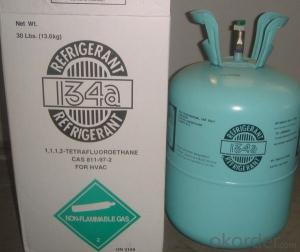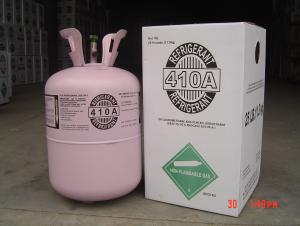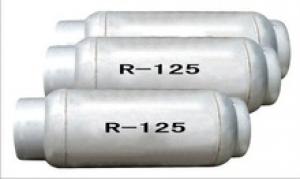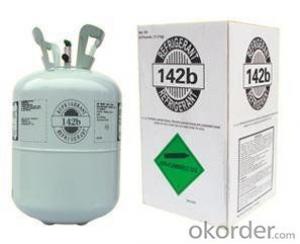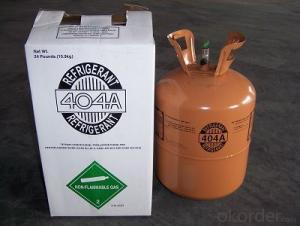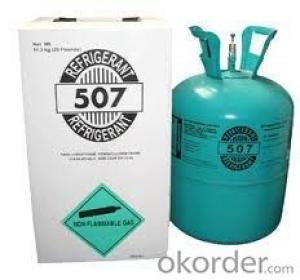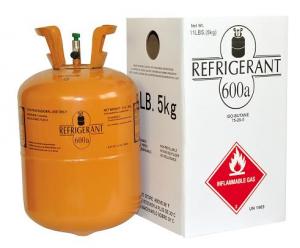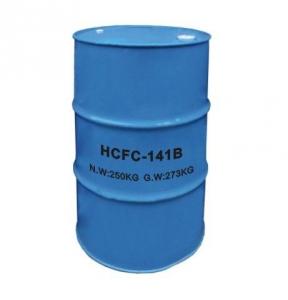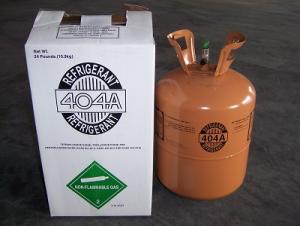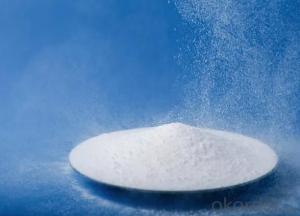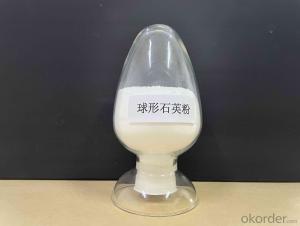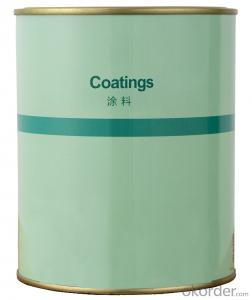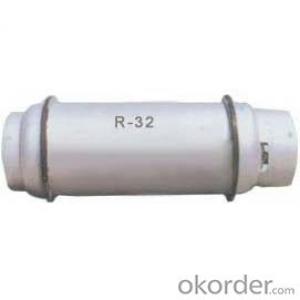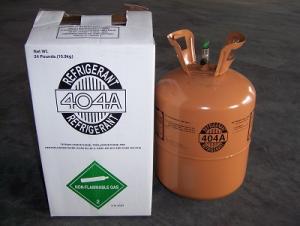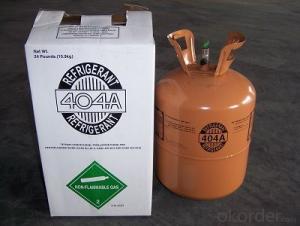Refrigerant Gas R134a
- Loading Port:
- Shanghai
- Payment Terms:
- TT OR LC
- Min Order Qty:
- -
- Supply Capability:
- 1000MT m.t./month
OKorder Service Pledge
OKorder Financial Service
You Might Also Like
high quality r134a refrigerant gas with 99.9% purity
Application
The product is used as a refrigerant in household , industrial and commercial airconditioning systems.
It can also be used as an aerosol propellant for pesticide and paint , or as a fire extinguishing agent.
It is a primary feedstock for fluoropolymers.
Physical and chemical properties
Under normal temperature and pressure , the product is a colorless, odorless and nontoxic gas. Its melting point is -160°C, its boiling point is -40.8°C and its liquid density is 1.213g/cm3 at 20°C. Its mixture with air is nonflammable and free of explosion risk. It shows good thermal and chemical stabilities under normal conditions.
Storage&transportation
The product is packed in appropriate cylinders or tanks(or tank cars). It is to be kept in cool and dry place, without being exposed to heat source , sunlight and raining.
It is to comply with the regulations of railway and road transportation issued by Chinese government concerning hazardous cargo.
Packing specifications
Non-refillable cylinder: 30lbs/13.6kg, 50lbs/22.7kg; Refillable Cylinder:400L,800L,926L,1000L;ISO TANK.
Product: | tetrafluoroethane R134A | ||||||||||||||||
| |||||||||||||||||
Property of chloride : |
| ||||||||||||||||
| |||||||||||||||||
Packing | Can of 220g, 250g, 280g, 300g, 340g, 500g, 800g, 1000g; Disposable cylinder 30lb/13.6kg, 50lb/22.7kg; Recyclable cylinder 400L, 800L, 926L, 1000L; ISO-Tank. | ||||||||||||||||
| |||||||||||||||||
Quality standard : |
| ||||||||||||||||
| |||||||||||||||||
Application: | Refrigerant for CFC-12 substitute. | ||||||||||||||||
- Q:How the most primitive life on earth is produced under what conditions
- These macromolecules are not in the modern sense of the protein and nucleic acid polymer, but a variety of amino acids, nucleosides, phosphoric acid, carbohydrates and some other small molecules of the disorder of the polymer, when the nucleoside and phosphoric acid composition of nucleoside Acid, and gradually form a nucleotide chain, the formation of these nucleotide chain of the amino acid on the formation of the field of binding force, and then assembled peptide chain. Or by the combination of a variety of amino acids into peptide chain formed by the force field on the surrounding nucleus formation field binding effect, and then assembled the nucleotide chain, with the formation of peptide chain and nucleotide chain longer and longer , The molecular weight is growing, and ultimately the formation of nucleic acids and proteins, nucleic acid and protein formation is the product of interaction with each other, is generated at the same time.
- Q:Is grease a polymer compound? Is it a derivative of saturated hydrocarbons?
- Although the relative molecular mass of oil is large, but does not belong to the polymer compound, the polymer compound should refer to a chain with a base number n of the material. Nor is it a derivative of saturated hydrocarbons. The oil is a non-saturated tallow fatty acid glyceride, and the fat is a saturated glycerol ester of saturated higher fatty acids. The more the double bond, the lower the boiling point
- Q:What is the hydrocarbon thing
- Hydrocarbon, which is composed of two elements, consists of carbon and hydrogen. It is called a hydrocarbon and a hydrocarbon, which reacts with chlorine, bromine vapor, oxygen and so on. It does not react with strong acid, strong base, strong oxidizer (Such as: potassium permanganate) reaction, such as methane and chlorine in the light conditions of reaction to produce methyl chloride, dichloromethane, chloroform (chloroform) and tetrachloromethane (carbon tetrachloride) and other derivatives in the Hydrocarbon molecules in the carbon atoms connected to each other to form a carbon chain or carbon ring molecular skeleton, a certain number of hydrogen atoms attached to the carbon atoms, so that each carbon atom to maintain the price of the type of hydrocarbon is very much, the structure of known hydrocarbons More than 2,000 hydrocarbons are the parent of an organic compound. Other organic compounds can be seen as derivatives of one or more hydrogen atoms in the hydrocarbon molecule that are replaced by atoms or radicals of other elements. Word, is the use of "carbon" consonant with "hydrogen" vowel synthesis of a word, with "carbon" and "hydrogen" the composition of the internal structure of the word, the hydrocarbon is the parent of all organic compounds can be said that all Organic compounds are nothing but the result of replacing some of the atoms in the hydrocarbons with other atoms.
- Q:Are hydrocarbons are hydrocarbons and that alcohols? Is it carbon dioxide?
- Is a hydrocarbon derivative.
- Q:The aromatic hydrocarbon derivative refers to monocyclic or polycyclic
- To see what is the derivative of aromatic hydrocarbons, by its own is a single ring or multi-ring decision
- Q:Organic chemistry studies the performance of hydrocarbons and their derivatives, either right or wrong
- Organic compounds refer to hydrocarbons and their derivatives. Organic chemistry is the study of the structural characteristics of organic compounds, synthetic methods and physical and chemical properties of the chemical.
- Q:What is the relationship between hydrocarbon and hydrocarbon derivatives?
- The hydrocarbon is the parent of the organic compound, and the other various organic compounds can be regarded as derivatives of one or more hydrogen atoms in the hydrocarbon molecule being replaced by atoms or radicals of other elements.
- Q:Hydrocarbons and hydrocarbon derivatives are not all non-electrolytes
- Hydrocarbons are, derivatives are not necessarily, such as organic acids (formic acid, acetic acid, etc.)
- Q:China's largest asphalt production base where
- Oil asphalt is the residue after distillation of crude oil. According to the degree of extraction of different, at room temperature into a liquid, semi-solid or solid. Oil asphalt color black and shiny, with a high temperature. Because it is in the production process has been distilled to 400 ℃ or more, and thus contain little volatile components, but there may still be high-molecular hydrocarbons without volatile, these substances are more or less harmful to human health.
- Q:Ionic compounds, covalent compounds, electrolytes, non-electrolytes, which are both compounds and inorganic compounds
- An ionic compound consisting of a cation and an anion. Active metals (such as sodium, potassium, calcium, magnesium, etc.) and active non-metallic (such as fluorine, chlorine, oxygen, sulfur, etc.) when the combination of active metal loss of electrons to form positively charged cations (such as Na +, K +, Ca2 + (Such as F-, Cl-, O2-, S2-, etc.), cations and anions are formed by electrostatic interactions to form ionic compounds. For example, sodium chloride is an ionic compound consisting of positively charged sodium ions (Na +) and negatively charged chloride ions (Cl-). Many bases (such as NaOH, KOH, Ba (OH) 2, etc.) and salts (such as CaCl2, KNO3, CuSO4, etc.) are ionic compounds. The total number of positive charges in the cationic compound is equal to the total number of negative charges carried by the anion, and the whole compound is electrically neutral. Most ionic compounds can not be conductive in solid (or crystalline), while their aqueous or molten state can be conductive. The ionic compounds generally have a higher melting point and higher boiling point, higher hardness, crisp and difficult to compress, and the highly volatile ionic compounds are linked by ionic bonds, without independent structures, such as sodium chloride.
1. Manufacturer Overview |
|
|---|---|
| Location | |
| Year Established | |
| Annual Output Value | |
| Main Markets | |
| Company Certifications | |
2. Manufacturer Certificates |
|
|---|---|
| a) Certification Name | |
| Range | |
| Reference | |
| Validity Period | |
3. Manufacturer Capability |
|
|---|---|
| a)Trade Capacity | |
| Nearest Port | |
| Export Percentage | |
| No.of Employees in Trade Department | |
| Language Spoken: | |
| b)Factory Information | |
| Factory Size: | |
| No. of Production Lines | |
| Contract Manufacturing | |
| Product Price Range | |
Send your message to us
Refrigerant Gas R134a
- Loading Port:
- Shanghai
- Payment Terms:
- TT OR LC
- Min Order Qty:
- -
- Supply Capability:
- 1000MT m.t./month
OKorder Service Pledge
OKorder Financial Service
Similar products
New products
Hot products
